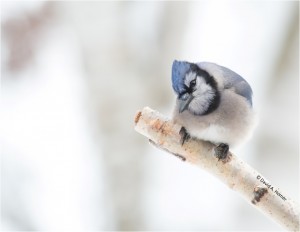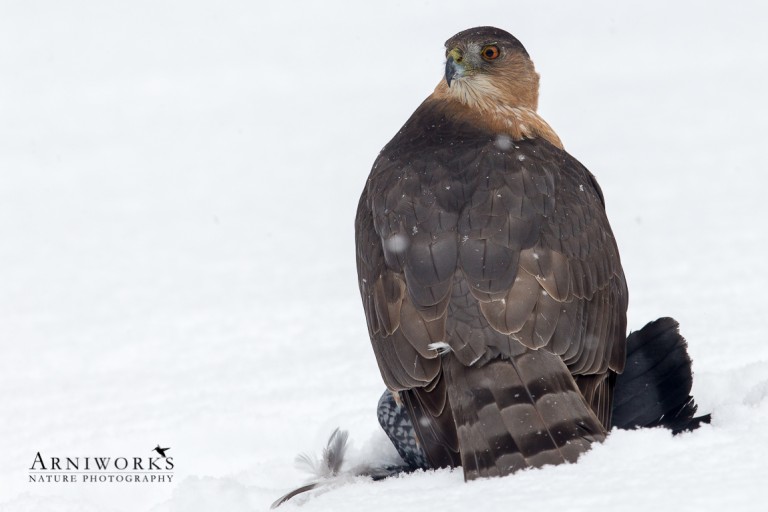It’s fall again, and for many who do not feed birds all summer, it is now time to get those feeders out. Make sure they are in good shape and thoroughly disinfected and cleaned before filling them. If it is now time to replace tired or broken feeders, there are a number of recently, newly developed feeders on the market. Some keep squirrels at bay and others don’t allow the larger birds to access the food. Many of the new feeders carry a life-time warranty. However, they are not inexpensive, but well worth the extra dollars for their efficiency and quality. You likely won’t find them at your big box stores, but they are available at local specialty shops. If your feeders do not need replacing, it is now time to start that Christmas list! If you have left over seed from last winter, you may need to replace it. Many seeds dry out or go mouldy after long storage times. If so, you may not have much success in attracting your favourite species! Fresh, quality feed is always the best buy!
When you make a decision to feed the birds, it is important to understand that you may also be inviting unwanted guests to your table!
 It is great to welcome chickadees, redpolls, nuthatches, cardinals, grosbeaks, doves, sparrows, finches, woodpeckers and even the bully blue jays during the dull days ahead. You can also expect squirrels, mice and many other four legged critters to arrive, depending on your location.
It is great to welcome chickadees, redpolls, nuthatches, cardinals, grosbeaks, doves, sparrows, finches, woodpeckers and even the bully blue jays during the dull days ahead. You can also expect squirrels, mice and many other four legged critters to arrive, depending on your location.
There are a couple of other avian species that most of us enjoy seeing, that is, as long as they don’t show up at, “my feeders”, because their intent is not the seed and suet we supply, but rather, the birds that eat the seeds and suet. These interlopers are killers, picking off the smaller birds as they swoop in like jet fighter planes to the area surrounding the feeding station!
Although there are a number of birds that kill smaller birds, northern shrikes and cooper’s hawks are the major birds that terrorize our feeder birds. If a blue jay happens to be near, it will scream and alert other birds of the imminent invasion. Small birds will then head for cover of nearby hedges, shrubs and conifers. If no alert is sounded, feeder birds can be easy pick’ns. It is always heart wrenching to watch a cooper’s hawk or northern shrike land in a nearby tree and enjoy its meal of one of your favourite visitors. However, that is the way these raptors were created!
Well, it’s getting late and it’s my turn to make dinner. I have a chicken on the rotisserie. What’s on your menu?
Written by David A. Homer, a member of the Board of Directors at The Couchiching Conservancy.
Do you want to learn more about feeder birds?
Take part in this sit down workshop to learn an introduction to bird identification, biology and bird behavior. We’ll discuss the different options for bird feeding and see what birds are at the feeders at Grant’s Woods during our time together. This Passport to Nature event takes place on November 13th. Learn more here.

